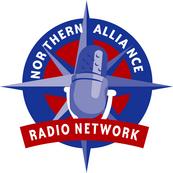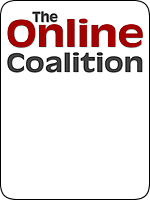
« CQ Flashback: Kerry Flip-Flops On Education (4/5/04) | Main | CQ Flashback: John Kerry -- Not A Black Man After All (3/8/04) »
I had an opportunity to interview my friend "Mike", the Navy SEAL and private contractor who spent the last three years in Iraq. I wanted to get his perspective since the Al Qaqaa story broke, since part of Mike's work as a private contractor dealt with explosives demolition. Part I of the interview focuses on that issue.
Q. What do you know about the ASP at Al Qaqaa and the missing 380 tons of explosives?
A. Not much first-hand knowledge � That was not one of the sites I was sent to blow anything up or acquire any of the explosives that were there. I had access to a lot of different site maps, and I don�t remember seeing it on a site map. It may have been there, but I don�t remember it. If it was the size they say it is, I can�t imagine that we need to be worried about anything that was stored there. All these other places were inventoried, and we�re systematically blowing things up there. There was over a dozen major ammunition supply points [ASPs], which would be the largest places to find enemy ammunition. There were also 400 smaller cache sites all around Iraq.
Q. And Al-Qaqaa was not one of the major ones?
A. I�m not saying it wasn�t, I�m just saying that it wasn�t anything I�d seen on a site map. It wasn�t one of the places they sent us. We were destroying up to a hundred tons a day at a single site.
Q. In the ASPs you went to, how were they known to be ASPs? Were they discovered as we invaded, or did we know about them ahead of time?
A. Everything was known � everything was on a map before we went in. In fact, in every place I was, we had bombed several of the bunkers or magazines that were there, and that created more work for the EOD [explosive ordinance demolition] guys, because it spreads ordinance all over the place, which then becomes designated as unexploded ordinance. Just dropping any size JDAM into a bunker will blow up everything in the center, but the rest � It makes it unusable by the enemy during the invasion.
But yeah, we knew before we went in where all the main ASPs were, in any aerial map you can see all these pods. There were several hundred magazine bunkers in every one of these ASPs, all loaded with artillery rounds or tank rounds, or rockets, bombs, or land mines � all the things that are comprised in captured enemy ammunition.
Q. Walk me through a typical process when the Army or Marines would come upon an ASP. How would they normally go about securing the site?
A. If they�re doing a ground assault, they�d take over the base; if they met any kind of resistance, they�d shoot and kill anyone who�s resisting. The First Marine Division, followed by the Third Infantry Division went into these places to secure them during the war. If there was a firefight and everyone was killed, they just moved on towards Baghdad. I mean, during the invasion the main objective was to get to Baghdad and go north to Tikrit, and overthrow the government.
Q. The primary mission of the invasion was to overthrow Saddam � it wasn�t to stand guard at the ASPs, right?
A. Right. There was not enough people to do that, and that would not be the number-1 priority anyway � that was to get Saddam. All of these follow-on projects and missions was why we had all the contractors there, like me, to take care of other projects like captured enemy ammunition.
Q. Once they�ve captured a site and confirmed that it�s secure and pushed past it, it�s still part of their lines of communication, right? At least the area?
A. I�m not what you�re asking.
Q. In other words, take Al Qaqaa, although I know you don�t have any personal experience there. Al Qaqaa was on the way to Baghdad, and I would assume then that they would still need to secure the general area in order to keep their lines of communication secure all the back to Kuwait.
A. Yeah, and I�m sure that judging by the description and size of it that we did that. In fact, I was reading something that two military units went into Al Qaqaa and they didn�t find anything the first few times they went in. All the places I�ve been � there�s a camp outside of An Najaf, which is probably the largest one in Iraq, and there�s another one near Tikrit, and Fallujah, and these major ASPs are all over the place � we certainly went in there and took care of them, and turned them over to contractors in order to do the demolition.
Q. Were you surprised when you heard at the press conference at the Pentagon that it was the regular Army that did the demolition at Al Qaqaa?
A. No, because they do some demolition operations, too. They don�t have time to do a thorough � like what we do, we have an Army Corps of Engineers contract. You can look it up on [their] website. Under captured enemy ammunition, you�ll find some pretty conservative estimates on how much there is there and what our role is. We�ll go in there and inventory, set aside anything useful for the Iraqi army � which isn�t much � and then blow up the rest of it.
Q. When you were going into these ASPs, were you given inventories of what was expected to be found there?
A. No. Now, I did mainly the security and the medical aspects of the job, but there�s several different types and pieces of it. One is EOD people, usually former military EOD techs with 20 years of experience or more. Their main role is blowing things up. Then there�s ammo handlers, guys who used to be in the ordinance field in the military, and their job would be to inventory, for the most part. They can recognize every different kind of ordinance, find out how much there is, put it all together and record it on the inventory sheets, and keep track of what we have over there.
It�s an awesome task, because it was estimated a year ago September that there�s over 2 million tons of captured enemy ammunition in Iraq. Except for maybe the US and Russia, it�s the largest arsenal in the world.
Q. I�ve seen varying estimates since then, between 600,000 tons and 2 million tons. That estimate was made after we�d been in-country for six months � er, five or six months after the fall of Baghdad, is that right?
A. That sounds about right. There�s been various estimates, but I don�t think anyone can say for a fact how much there is because we keep finding more. Then there�s the question of what you call enemy ammunition and what you call unexploded ordinance or UXO. UXO is not included in the calculation of captured enemy ammunition. UXO is the stuff that�s been dropped, exploded; it�s the stuff laying all over the place that�s unstable. CEA � the 2 million tons � is what�s in boxes and crates. It�s relatively stable and you can move it without having to worry about it too much. The amount of submunitions and stuff just laying around and not stable is considered UXO, and I don�t think anyone has an estimate of how much of that stuff there is. All of that [UXO] is usable by terrorists for IEDs, or improvised explosive devices.
Q. And when you wrote to your friends and family in April, you talked about that and the fact that it was difficult to guard the UXO, because the stuff was literally fired and dropped all over the place and spread over wide areas. In fact, villagers would go into those areas to try to pick that ordinance up for resale and end up killing themselves.
A. That�s absolutely true, and we corpsmen wound up sometimes helping to take care of the remains, or capturing prisoners who were stealing things.
Q. It�s something that people don�t usually think about but is fairly typical of most shooting wars � a lot of ordinance doesn�t explode on impact, but it�s still volatile and extremely lethal.
A. And any bunker that�s been hit by a bomb, everything in it becomes UXO. A percentage of it goes high order, which means it explodes, but there�s a lot more that doesn�t completely explode, so you�ve got high explosives in all these unexploded shells all over the place. The reason people are willing to steal this kind of stuff is that they�re either terrorists or they sell it to terrorists, who use it to make IEDs. Sometimes they�re just going after the casings to resell the brass. I don�t know if you know what an artillery shell looks like, but the casing is the largest part. Inside the casing is [the propellant and related parts]. After you take the projectile off the top of the shell, they dump the propellant on the ground and keep the shell, which they can get $10 for � a lot of money. But that propellant is a significant UXO hazard. One match and it all can go up, and I;ve been there when that happened. They create patients for me to treat.
Q. There doesn�t appear to be any shortage of that [UXO] there, either.
A. No, when we first got there it was lying all over the place. The propellant is good to use for many things in the terrorist world as well.
Q. At the ASPs where you worked, how difficult would it be for looters to come in and haul off tons of materials, as has been described in the allegations surrounding Al Qaqaa?
A. Any place used by us as a forward operating base, where we set up a perimeter, it would be pretty difficult. In fact, while I was there we had incidents where people tried to penetrate the wire and we would either take them prisoner or shoot and kill them. Unfortunately, the majority of ASPs are not FOBs or bases, and they�re fairly open for people to go in and steal. They�re supposed to be patrolled, and we have aerial reconnaissance planes and all sorts of things like that, but you can�t be everywhere at once. That�s why it�s so important that we stay in Iraq and places like Iraq until we�ve completely cleaned out all those places and gotten rid of all that stuff.
Tomorrow I hope to transcribe the second part of the interview, which deals with the new Osama bin Laden tape, and Mike's perspective on the war on terror and how it relates to this election.
Sphere ItTrackback Pings
TrackBack URL for this entry is

captain*at*captainsquartersblog.com


My Other Blog!
E-Mail/Comment/Trackback Policy
Comment Moderation Policy - Please Read!
Skin The Site








Hugh Hewitt
Captain's Quarters
Fraters Libertas
Lileks
Power Line
SCSU Scholars
Shot In The Dark
Northern Alliance Radio Network
Northern Alliance Live Streaming!



Des Moines Register
International Herald Tribune
The Weekly Standard
Drudge Report
Reason
The New Republic
AP News (Yahoo! Headlines)
Washington Post
Guardian Unlimited (UK)
New York Times
Los Angeles Times
OpinionJournal
Pioneer Press
Minneapolis Star-Tribune
MS-NBC
Fox News
CNN

Design & Skinning by:
m2 web studios
blog advertising

- dave on Another National Health Care System Horror Story
- brooklyn on Hillary Not Hsu Happy
- rbj on Hillary Not Hsu Happy
- Robin S on Requiem For A Betrayed Hero
- Ken on Hillary Not Hsu Happy
- Robin S. on Requiem For A Betrayed Hero
- RBMN on Hillary Not Hsu Happy
- NoDonkey on Another National Health Care System Horror Story
- Robin Munn on Fred Thompson Interview Transcript
- filistro on When Exactly Did Art Die?










